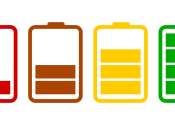UK needs to act to prevent electric vehicle battery waste mountain, new study says
Recycling technologies for end-of-life lithium ion batteries (LIBs) are not keeping pace with the rapid rise of electric vehicles, storing up a potentially huge waste management problem for the future, according to a new ...
Nov 6, 2019
4
72









